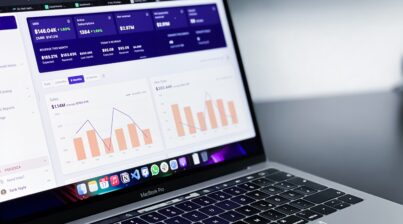What do the words HR Analytics bring to mind for you as an HR professional? Some view it as a complicated, scary black hole of math. Others consider it time-consuming data tracking. However, HR personnel who use HR analytics know that when they use it correctly, it can have a huge impact on and change the success of an HR department. Wouldn’t it be great to have your HR team viewed as able to predict business success by using smart analytics to drive results throughout your organization?
Defining HR Analytics
HR analytics – also referred to as talent analytics, people analytics, or workforce analytics – is the process of collecting and analyzing HR data in order to improve an organization’s workforce performance.
Using HR Analytics
Oftentimes, people may view HR analytics as data that is narrowly focused and used exclusively by HR personnel. Although it is the statistical analysis of workforce data, HR analytics can be integrated with HRIS, OKR, Performance, Applicant Tracking, Engagement, LMS, Payroll, and Rewards & Recognition data and used across the organization. These analytics turn data into valuable action items to help leaders:
- make better business decisions
- attract, manage, retain employees
- improve ROI
- create better work environments
- maximize employee productivity
- have a positive impact on the bottom line
Organizations haven’t usually used HR data for understanding employees. Typically, it’s used one to two times per year to track engagement and conduct performance reviews. But HR analytics can be used for so much more. Employers need to do pulse checks on a regular basis. Dig into what the data is showing – and how is it trending – so that leaders can understand a deeper level such as employees’ time away from work, calendaring, travel, and professional development. Look back in past data and find out what happened. Then, use data to be forward looking and preemptive to avoid problem areas. Connect HR data with other department data to discover how to drive greater team performance, customer retention, and profit per employee.
Do you know how to use HR analytics to its fullest capabilities?
Do you know what data your HR team should be paying attention to?
Here are three tips for business-focused HR analytics:
- There are no magic one-size-fits-all HR analytics that work for every organization. It’s important to choose and use data based on the specific needs of your organization – your industry and company size are two important differentiating factors.
- Your HR analytics should be directly linked to your business goals and KPIs. Don’t waste time analyzing data that has no impact on your organization’s business results. Effective business-focused data allows your HR team and leadership to understand which processes, attitudes, skills, and competencies actually drive business results.
- Ensure your HR analytics include information important to other leaders across your organization, not just HR personnel. Consider what your department leaders care about so that HR doesn’t continue to be a cost center – rather than a profit center – that only brings value by cutting costs, positions, programs, and overhead.
Commonly Used Data
An organization’s workforce data most often includes recruitment, performance management, and talent management. But HR analytics can bring in data from many different systems, including:
- Recruiting Data: includes the number of candidates who applied, their resumes, and recruitment sources.
- Demographic Data: includes employee ID, name, gender, birth date, residence address, job position, department, and cost center.
- Performance Management: includes employee reviews and performance ratings.
- Learning Management: contains course offerings and registers employee’s progress through different training modules and programs.
- Job Architecture: includes different job roles put into salary scales that have bands and grades with maximum reward levels.
- Compensation & Benefits: includes salary, bonus, medical insurance coverage, life insurance, retirement, and much more.
- Succession Planning: includes strategies for leadership development, managerial bench strength, and data about which people or next in line for positions.
- Travel: includes the number of times an employee travels and could be a potential predictor of employee turnover.
- Mentoring: this is a key practice for high potential employees to make them more effective, retain them longer, and make them more eligible to advance to a more senior position.
- Employee Survey Data: this data can range from a poll on the quality of food provided in the employee cafeteria to how employees view the CEO’s effectiveness and popularity as a leader.
- Engagement Survey: this data is often collected by a third party to guarantee employee anonymity, asking a variety of questions from satisfaction to needed resources to professional development.
- Absence Data: includes sick days, paid time off, holidays, maternity/paternity leave, and attendance.
- Customer Relationship Management (CRM) Data: includes customer contact information, one-to-one meetings and communications, lead scoring, and much more.
- Financial Data: includes revenue, expenses, cost of personnel, ROI calculations, and other financial information.
- Production Management Data: includes scheduling, service calls, delivery rate, and much more.
- Sales Data: this is another outcome measurement which includes sales per store or per salesperson.
As you can see by this list – which isn’t even all inclusive – many data sources can be used and leveraged for HR analytics. All of this data is typically housed on many disparate systems.
Integrating Data
How does your HR team gather data from disparate systems and analyze it? Do you manually gather your data into complex spreadsheets? Do you build, maintain, and administer your analytics in an underperforming and unsecured do-it-yourself solution? That’s a lot of heavy lifting required to deliver what your organization needs in its analytics, dashboards, scorecards.
What if you could integrate all your systems into one platform and then personalize the dashboards and scorecards your organization needs across every department?
Well, Employee Cycle does just that with pre-built integrations to connect and visualize data from your different HR sources. We integrate with applicant tracking, such as JAZZHR, Lever, and Greenhouse; HRIS systems such as Zenefits, Sapling, BambooHR, and Namely; payroll systems such as ADP, Paycom, Paylocity, and TriNet; engagement platforms such as Culture Amp; employer brand platforms such as Glassdoor; and performance platforms such as 15Five, Lattice, and Reflektive. We are consistently working on integrations with new partners on a regular basis with more to come in the near future! Read more about our Integration List to discover how we can help you make the best use of your HR analytics to produce information for strategic, informed business decisions.












